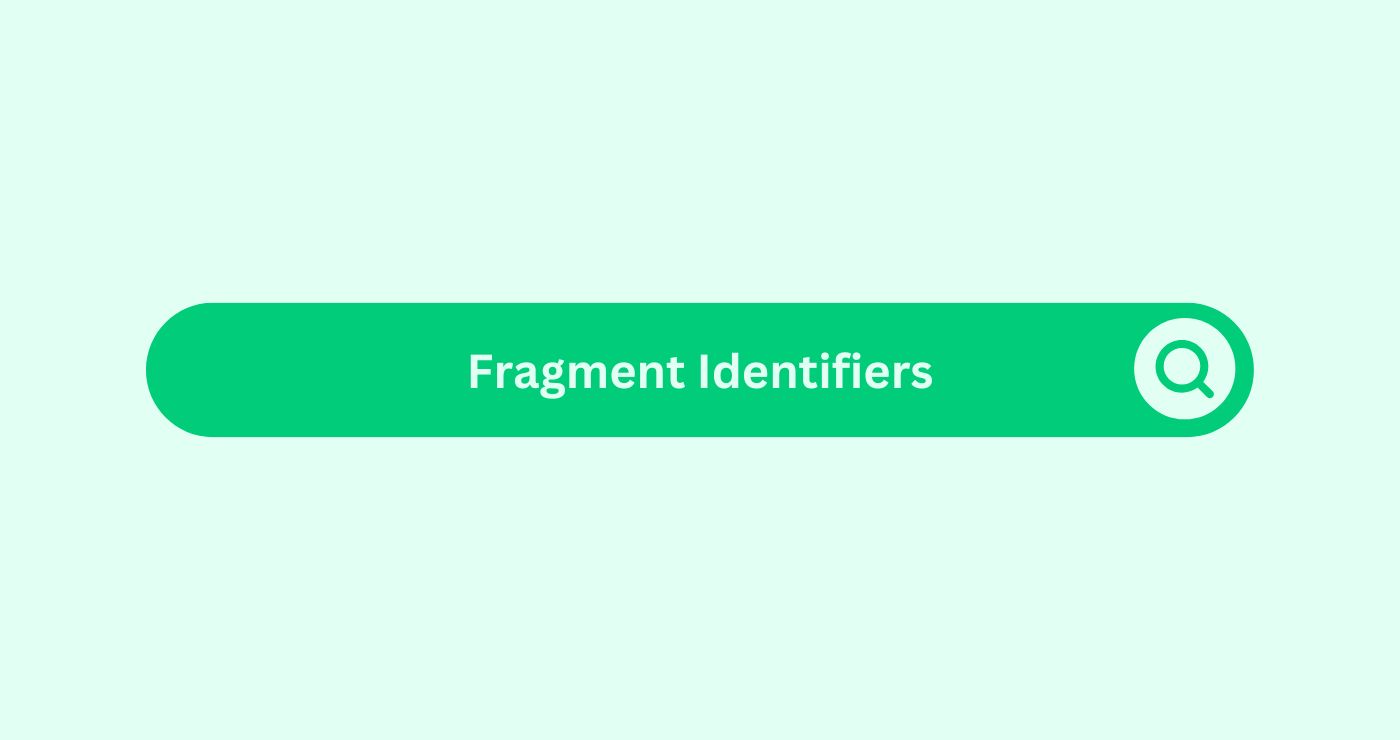Definition
Fragment identifiers are elements within a URL, marked by a # symbol, that direct users to a specific section of a webpage. Commonly used for anchor links, navigation, and deep linking, fragment identifiers help enhance user experience (UX)Definition User Experience (UX) refers to the overall experi... by making content easily accessible. These identifiers are particularly valuable in single-page applications (SPAs) and long-form content like blogs or guides, enabling smooth scrolling and faster navigation. By creating a seamless browsing experience, fragment identifiers indirectly boost SEO by improving engagementDefinition Engagement in content marketing refers to the deg... metricsWhat are Metrics in the context of SEO? Metrics in SEO refer..., such as time-on-page and click-through rates.
Example:
Let’s consider an example of a “digital marketing agency Auckland” publishing a detailed blog about “Performance marketing strategies for 2025.” Instead of making users scroll through the entire content, the agency adds a table of contents with fragment identifiers:
Table of Contents:
- Introduction to Performance Marketing
- Key Trends for 2025
- Why Choose a Digital Marketing Agency in Auckland
When a user clicks on “Why Choose a Digital Marketing Agency in Auckland,” the URL updates to:
https://www.digitalmarketingagency.co.nz/blog/performance-marketing#why-auckland-agencyThe page instantly scrolls to the “Why Choose a Digital Marketing Agency in Auckland” section. This functionality improves navigation and keeps users engaged, reducing bounce rates and enhancing SEO performance.
Formulas
Steps to Implement:
- Assign
idattributes to the HTML elements you want to link:<h2 id="key-trends">Key Trends for 2025</h2> - Create anchor links pointing to these IDs:
<a href="#key-trends">Key Trends for 2025</a>
This simple setup ensures smooth scrolling and boosts usability. For single-page applications (SPAs), frameworks like React or Vue.js manage hash-based routing for fragment identifiers dynamically, integrating JavaScriptJavaScript is a versatile programming language that plays a ... to enhance navigation.
5 Key Takeaways
- Improved User Experience: Fragment identifiers simplify navigation by guiding users directly to relevant content sections.
- Enhanced EngagementDefinition Engagement in content marketing refers to the deg... MetricsWhat are Metrics in the context of SEO? Metrics in SEO refer...: Better usability increases time-on-page, reduces bounce rates, and indirectly improves SEO rankings.
- SEO-Friendly Navigation: Adding fragment identifiers to anchor links makes content easily discoverable and sharable, boosting search visibility.
- IntegrationDefinition Integration in the SEO Glossary combines tactics ... with SPAs: Fragment identifiers work seamlessly with JavaScriptJavaScript is a versatile programming language that plays a ... frameworks like React or Vue.js for dynamic routing.
- Optimised for Long-Form Content: Using fragment identifiers in blogs and guides improves readability and deep-linking potential for better indexingDefinition Indexing in content marketing involves search eng....
Benefits of Fragment Identifiers in SEO
Elements of a URL with a Fragment Identifier
https://example.com/blog#section-name- Base URL:
https://example.com/blog - Fragment Identifier:
#section-name(Links to a specific section)
Table: Impact of Fragment Identifiers
| Feature | Without Fragment Identifiers | With Fragment Identifiers |
|---|---|---|
| Content Navigation | Manual Scrolling | Instant Section Access |
| EngagementDefinition Engagement in content marketing refers to the deg... MetricsWhat are Metrics in the context of SEO? Metrics in SEO refer... | Lower EngagementDefinition Engagement in content marketing refers to the deg... | Higher Time-on-Page |
| SEO-Friendly Sharing | Limited | Improved |
By leveraging fragment identifiers, businesses like “SEO Company” or “digital marketing Auckland” can enhance content usability and engagementDefinition Engagement in content marketing refers to the deg... for improved SEO performance.
FAQs
How do you implement fragment identifiers in HTML?
To use fragment identifiers, add an id attribute to the target element and create an anchor link pointing to that ID.
For example:
About Us
How do fragment identifiers improve user experience (UX)?
They allow users to navigate directly to specific sections of a page, making the browsing experience faster and more intuitive.
Are fragment identifiers outdated for modern web design?
No, they are still widely used, especially in SPAs, blogs, and long-form content, as they improve navigation and usability.
How do fragment identifiers impact SEO performance?
While they do not directly influence search rankings, fragment identifiers enhance user experience and engagementDefinition Engagement in content marketing refers to the deg... metricsWhat are Metrics in the context of SEO? Metrics in SEO refer..., which are critical to SEO success.
How can you use fragment identifiers for anchor links in blog posts?
Add fragment identifiers to create a clickable table of contents that improves readability and enables deep linking to specific blog sections.




